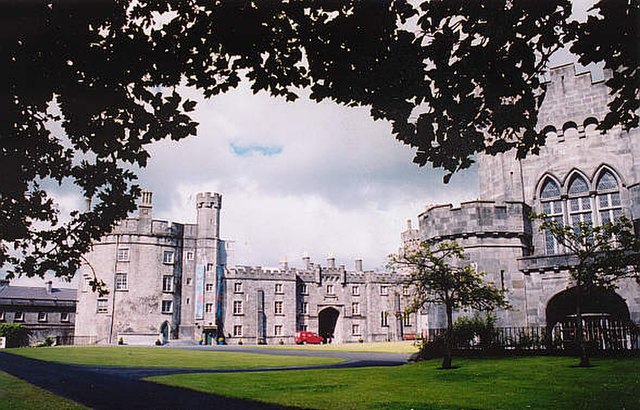The siege of Clonmel, from 27 April to 18 May 1650, took place during the Cromwellian conquest of Ireland, when Clonmel in County Tipperary was besieged by 8,000 men from the New Model Army under Oliver Cromwell. The garrison of 1,500 commanded by Hugh Dubh O'Neill eventually surrendered after inflicting heavy casualties on the besiegers.
One of the remaining towers, part of the western defensive wall at the time of the siege.
Cromwellian conquest of Ireland
The Cromwellian conquest of Ireland or Cromwellian war in Ireland (1649–1653) was the re-conquest of Ireland by the forces of the English Parliament, led by Oliver Cromwell, during the Wars of the Three Kingdoms. Cromwell invaded Ireland with the New Model Army on behalf of England's Rump Parliament in August 1649.
Oliver Cromwell, who landed in Ireland in 1649 to re-conquer the country on behalf of the English Parliament. He left in 1650, having taken eastern and southern Ireland, passing his command to Henry Ireton.
Kilkenny Castle. The Irish Confederate capital of Kilkenny fell to Cromwell in 1650.
Henry Ireton. Cromwell passed the command of Parliamentarian forces in Ireland to Ireton in 1650. He died of disease at the Siege of Limerick in 1651.
King John's Castle and Thomond Bridge, Limerick city. Ireton took Limerick in 1651 after a long siege.





